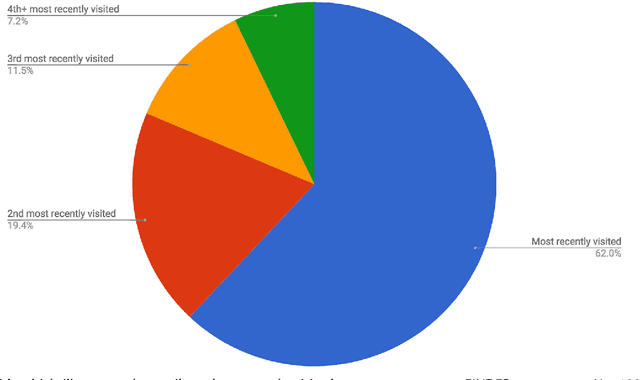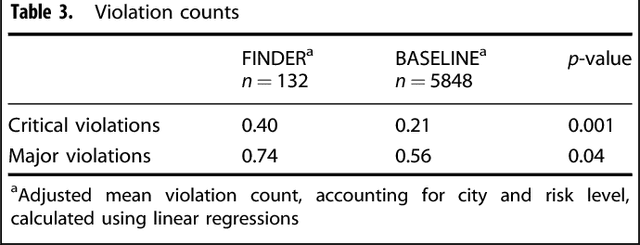Machine-learned epidemiology: real-time detection of foodborne illness at scale
Paper and Code
Dec 05, 2018



Machine learning has become an increasingly powerful tool for solving complex problems, and its application in public health has been underutilized. The objective of this study is to test the efficacy of a machine-learned model of foodborne illness detection in a real-world setting. To this end, we built FINDER, a machine-learned model for real-time detection of foodborne illness using anonymous and aggregated web search and location data. We computed the fraction of people who visited a particular restaurant and later searched for terms indicative of food poisoning to identify potentially unsafe restaurants. We used this information to focus restaurant inspections in two cities and demonstrated that FINDER improves the accuracy of health inspections; restaurants identified by FINDER are 3.1 times as likely to be deemed unsafe during the inspection as restaurants identified by existing methods. Additionally, FINDER enables us to ascertain previously intractable epidemiological information, for example, in 38% of cases the restaurant potentially causing food poisoning was not the last one visited, which may explain the lower precision of complaint-based inspections. We found that FINDER is able to reliably identify restaurants that have an active lapse in food safety, allowing for implementation of corrective actions that would prevent the potential spread of foodborne illness.
 Add to Chrome
Add to Chrome Add to Firefox
Add to Firefox Add to Edge
Add to Edge